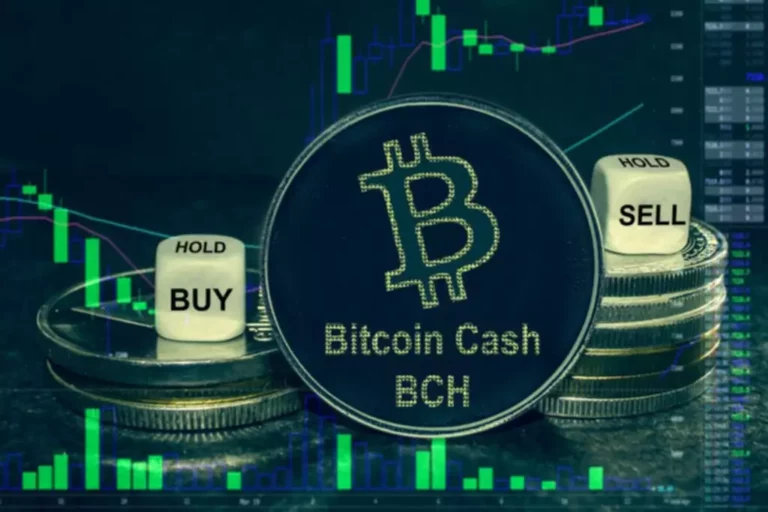These property are used to execute trades without relying on a centralized order guide. AMMs democratize buying and selling by permitting anyone with tokens to turn out to be a liquidity provider. Traditional markets typically have high limitations to entry, limiting participation to well-established companies and financial establishments.
Growing institutional interest in DeFi could deliver significant capital inflows to liquidity pools as quickly as these regulatory developments are cleared. No more than one account can hold the auction slot at a time, but because the successful bidder you possibly can name as a lot as four extra accounts to receive the low cost. If the slot is presently occupied, you have to outbid the current slot holder to displace them. If somebody displaces you, you get a proportion of your bid back, based on how a lot time remains. As long as you maintain an energetic public sale slot, you pay a discounted buying and selling payment equal to 1/10 (one tenth) of the conventional buying and selling fee when making trades against that AMM. AMMs operate on distributed ledgers or blockchains, removing the necessity for a central authority or middleman.
Exploring Liquidity Pools And Amm On Stellar
This enables permissionless trading, where anyone with an web connection can participate in shopping for and selling crypto property. Providers receive liquidity tokens that can be utilized to generate income from transaction fees within the pool. The bigger the quantity of liquidity contributed, the more reward an LP will receive. These are swimming pools of funds that provide liquidity for various DeFi actions. When somebody wants to borrow USDC in exchange for ETH, for instance, the tokens they obtain will come from an current liquidity pool containing the required funds. With AMMs on the forefront of innovation, the means ahead for decentralized finance appears promising and extra inclusive than ever earlier than.

Hybrid CFMMs enable extremely low price influence trades by utilizing an exchange fee curve that is largely linear and becomes parabolic only once the liquidity pool is pushed to its limits. Liquidity suppliers earn extra in charges (albeit on a lower fee-per-trade basis) because capital is used more effectively, while arbitrageurs still profit from rebalancing the pool. If you are thinking about changing into an LP, the process https://www.xcritical.com/ typically includes choosing an appropriate liquidity pool, depositing your property, and receiving liquidity pool tokens in return. These tokens symbolize your share of the pool’s property and the charges generated. You can be part of liquidity swimming pools on various DeFi platforms, each with its unique pools and incentives. Liquidity swimming pools are essentially good contracts that hold pairs of assets, like ETH and DAI, in predefined ratios.
Stay updated on the performance of the liquidity swimming pools you participate in. This consists of monitoring buying and selling fees, rewards, and potential changes to the pool’s parameters. Automated Market Makers (AMMs) present liquidity within the XRP Ledger’s decentralized trade.
These layered earning opportunities have given rise to strategies like yield stacking, the place users optimize their returns by leveraging their LP tokens across a quantity of DeFi functions. An AMM gives usually better trade charges when it has bigger overall amounts in its pool. This is because any given commerce causes a smaller shift within the steadiness of the AMM’s belongings. The more a commerce unbalances the AMM’s provide of the two belongings, the more extreme the trade fee turns into.
Impermanent Loss Protection
Some helpful tools embody CoinMarketCap and Pools, where customers can examine different liquidity swimming pools. Upon providing a pool with liquidity, the provider normally receives a reward within the form of liquidity supplier (LP) tokens. These tokens have their own worth and can be used for numerous features all through the DeFi ecosystem. To retrieve the funds they deposited into the pool (plus the fees they’ve earned), providers should destroy their LP tokens. In DeFi, AMM refers to algorithms that mechanically regulate token costs in liquidity swimming pools.

Each AMM gives its liquidity suppliers the facility to vote on its charges, in proportion to the variety of LP tokens they hold. Whenever anyone locations a new vote, the AMM recalculates its payment to be a median of the newest votes, weighted by how many LP tokens these voters hold. Up to 8 liquidity providers’ votes could be counted this fashion; if extra liquidity suppliers try to vote, then only the top 8 votes (by most LP tokens held) are counted. Whoever creates the AMM becomes the primary liquidity provider, and receives LP tokens that symbolize 100 percent ownership of property within the AMM’s pool. They can redeem some or all of these LP tokens to withdraw assets from the AMM in proportion to the amounts presently there. (The proportions shift over time as folks commerce against the AMM.) The AMM does not cost a payment when withdrawing each assets.
Yield Farming And Incentives
By contributing funds, liquidity suppliers earn a share of trading charges generated by transactions within the pool proportionate to the entire liquidity they supply. A liquidity pool (LP) is a collection of funds held within a wise contract, which relies upon algorithms. Liquidity suppliers (LPs) are users who deposit tokens in DeFi smart contracts so that their crypto belongings can be utilized for buying and selling, borrowing, or lending by other customers. Underpinning AMMs are liquidity swimming pools, a crowdsourced collection of crypto belongings that the AMM uses to trade with individuals buying or promoting one of these property. The users that deposit their belongings to the swimming pools are known as liquidity providers (LPs).
However, it differentiates itself by having a multi-chain approach with assist for over sixteen blockchain networks. This allows for larger flexibility and accessibility for users seeking to commerce on completely different networks. Uniswap is the main decentralized cryptocurrency change available on the market, with billions of dollars traded every day. Its simplicity and user-friendly interface make it a best choice for a lot of traders.
These swimming pools are probably to have more steady prices and are enticing to bigger traders or institutions. Shallow liquidity describes pools with less capital, where even moderate-sized trades can cause vital value movements. Shallow swimming pools are extra prone to manipulation and could be riskier for merchants due to greater slippage. They offset the currency danger of letting others commerce towards the pool’s belongings. Liquidity providers benefit as a result of they will redeem their LP tokens for a percentage of the AMM pool. To participate in a liquidity pool, it’s going to first be essential to choose a platform.
Well-liked Amm Platforms
The XRP Ledger implements a geometric imply AMM with a weight parameter of zero.5, so it features like a relentless product market maker. For a detailed rationalization of the constant product AMM formulation and the economics of AMMs normally, see Kris Machowski’s Introduction to Automated Market Makers. Decentralized Exchanges (DEXs) have revolutionized the world of cryptocurrency buying and selling by eliminating the need for intermediaries and central authorities. One of the key improvements that energy DEXs is Automated Market Makers (AMMs).
Liquidity swimming pools emerged as an revolutionary approach to remove intermediaries and supply instant liquidity via AMMs. It refers to the ease with which an asset could be purchased or sold with out considerably impacting its value automated market makers crypto. In traditional centralized exchanges, liquidity is often provided by market makers and institutional investors. However, DEXs operate in a decentralized and peer-to-peer manner, making it difficult to attract traditional market makers.
While its group remains comparatively anonymous, the platform’s success and recognition speak for themselves. For a large portion of individuals on the planet, it’s not straightforward to acquire basic monetary instruments. Bank accounts, loans, insurance, and similar monetary products is in all probability not accessible for numerous causes. For instance, when an individual wants to swap token A for token B, the first step is to vary token A into the intermediary token T, then swap token T for token B.
With any AMM, when the price of its property shifts considerably in exterior markets, merchants can use arbitrage to revenue off the AMM. The auction mechanism is intended to return more of that value to liquidity suppliers, and more rapidly convey the AMM’s costs again into stability with external markets. AMMs’ algorithmic protocols and liquidity pools have changed traditional order e-book models, providing a decentralized and efficient buying and selling experience. While AMMs include certain challenges and limitations, their advantages outweigh these considerations, making them a vital part of the DeFi ecosystem.
LPs ought to understand this idea totally and think about their threat tolerance. However, LPs ought to concentrate on impermanent loss, which occurs when the value of their assets within the pool fluctuates relative to holding them outdoors the pool. Impermanent loss isn’t an actual loss but a temporary reduction within the worth of LPs’ assets compared to holding these assets in their wallets. It’s a form of passive loss that may diminish or cancel the passive revenue earned. Liquidity providers are the spine of Decentralized Finance, enabling yield farming, loans, and extra. Learn how LP tokens work, the risks concerned, and the critical role of liquidity in DeFi.
Liquidity suppliers (LPs) deposit their assets into these swimming pools and are rewarded with a fraction of the fees generated on the AMM. This apply, generally known as yield farming, incentivizes LPs to contribute to the liquidity pool. At its core, an Automated Market Maker is an algorithmic protocol that allows the autonomous and continuous buying and selling of digital belongings with out the need for conventional market-making mechanisms. Unlike the standard order book model used in traditional finance, where buyers and sellers place orders, AMMs depend on liquidity swimming pools to facilitate trading. One of the first concerns for liquidity suppliers in AMMs is impermanent loss. This phenomenon occurs when the value of an asset within the liquidity pool diverges from the market price.










